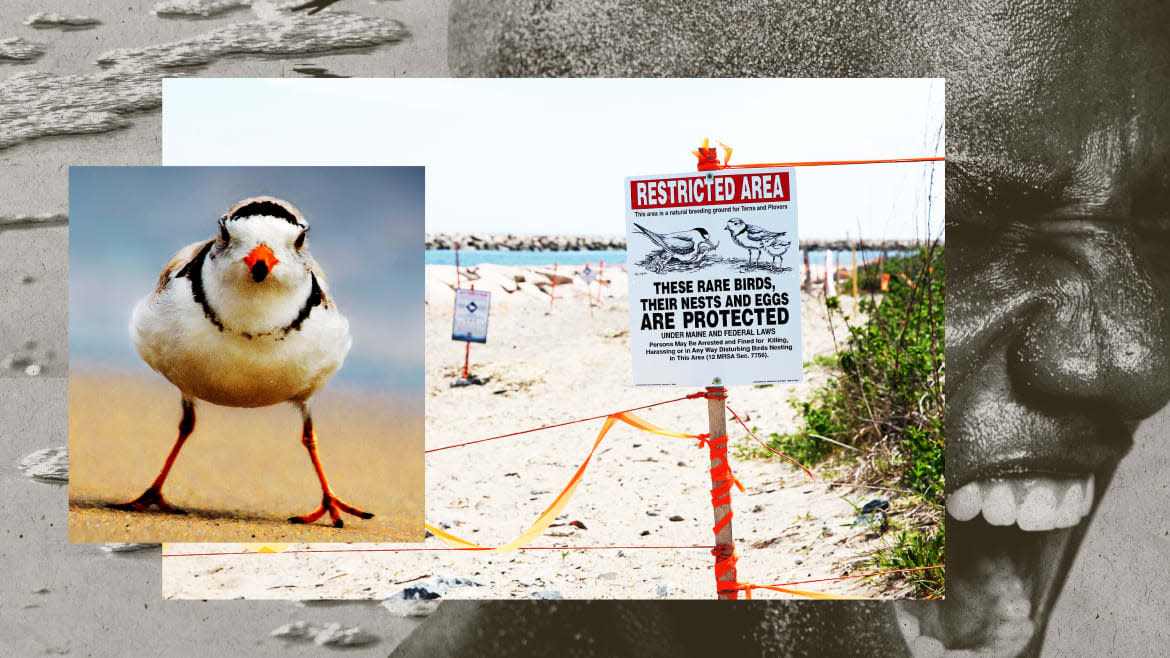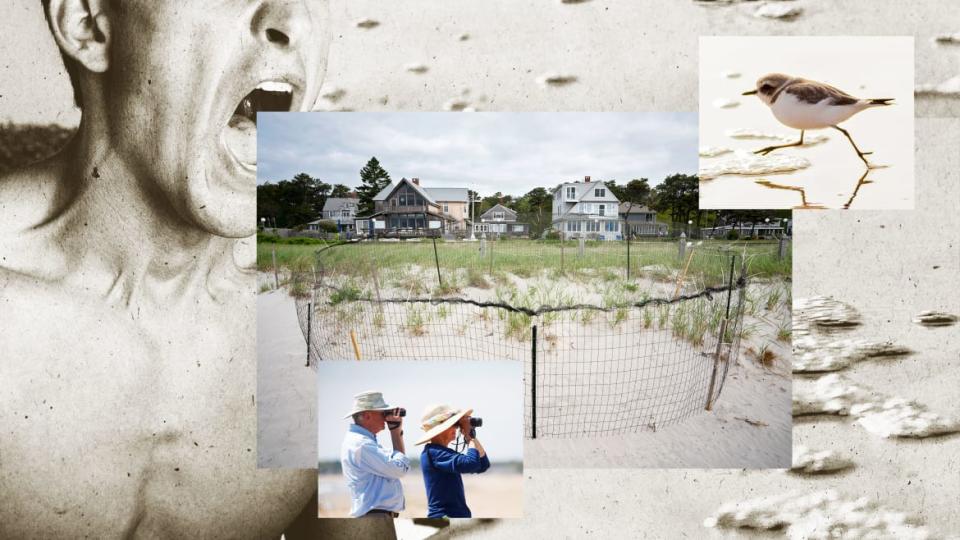The Tiny Bird Ruining East Coast Beach Vacations

It was a July afternoon on Duxbury Beach in Massachusetts, a perfect New England peak summer day, and things were getting heated. A young beach ranger—a college student home for the summer just trying to make a little cash—stopped traffic to allow for a wildlife crossing. A minuscule bird, almost like a cotton ball walking on toothpicks, flittered its way across the road, from one side of this narrow barrier beach to the other.
One would-be beachgoer, however, was not having it. Leaning out the window of his Jeep, he berated the ranger: “I am going to break through this crossing! I don’t care if I kill someone or a bird! I’ll plead my case in front of a judge!”
Nevertheless, the beach ranger stood his ground. Having done this job for several summers, he already knew that verbal assaults were par for the course. Especially in the Northeast, where precious beach days only come so many times per year, anything that gets in the way of your fun in the sun can feel like a personal affront—and people don’t like when beach days get interrupted.
“I’ve never seen it this bad,” the ranger told us, on condition of anonymity. “I’ve been doing this job for a few years and people have never been this mad. There’s going to be a revolution.”
Tell that to the piping plover, Charadrius melodus. A threatened species on both the Massachusetts and Federal Endangered Species Lists, this adorable, tiny shorebird loves to nest on prime swathes of beach just a few feet up from the waterline where it can indulge in a candy land of marine vegetation, mollusks and crustaceans. Plovers nest up and down the Atlantic coast, but their presence is most pronounced in New England, and specifically in Massachusetts, which has roughly 700 breeding pairs of plovers lining its beaches.

The bird was once abundant in the Northeast until the late 19th century, when their downy, sand-colored feathers became a sought after material for millinery. As the 20th century progressed and driving to the coast for a beach day became a popular American pastime, the increased use and development of beaches diminished plover habitat. As ground-nesting birds, plovers are unusually susceptible to human disturbances such as vehicular traffic and being chased by unleashed dogs, and by 1986, there were a mere 140 pairs left in Massachusetts. That number has since turned around thanks to local authorities’ conservation efforts, which include encircling plover habitats with fencing, and closing sections of beach during nesting season, which starts in March or April and continues until fledglings fly south for the winter in July or August. In 2019, the species reached a recovery goal of 2,000 pairs on the Atlantic coast.
“It’s still not a lot of birds,” said Corrie Folsom-O’Keefe, bird conservation manager for Audubon Connecticut, the state office of the National Audubon Society. “Four thousand birds is basically the number of grains in a bag of rice. It’s not a large number at all, and these birds have so many threats they have to deal with.”
So despite rising populations of plovers, the species remains threatened—and municipalities from Narragansett, Rhode Island, to Bar Harbor, Maine, continue to cordon off sections of beach to protect them. In a town like Duxbury which is known for its popular drive-on beach, much of the “crossovers” that visitors drive across to access the beach can be closed off for huge chunks of the summer if there are broods in the area. On July 22, a few weeks after that irate beachgoer made his feelings known to the ranger, the town’s recreation director sent an email to residents updating that until the plover offspring fledge (or develop wing feathers capable of flight), the crossovers will remain closed until early to mid-August. This year, the crossovers have been closed since the plovers started nesting on June 1. For taxpaying residents who pay a premium cost of living to be in a town like Duxbury—geographically like Cape Cod, yet close enough to commute into Boston—the beach closures can be a tough pill to swallow.
“I would remind everyone that these are wild animals and while there is much evidence/historical data about the timing of their fledging, nothing is concrete,” said the director’s email. “We hope that you will continue to be patient and we pledge to provide you with any new information as quickly as we can.”
Plover policies vary municipality to municipality and state to state. Although much of Duxbury Beach has been closed the majority of this summer, beaches in Connecticut, for example, rely on fencing and posted signs to preserve plover habitat, and almost never close completely when plovers nest. Over at the Cape Cod National Seashore, the Off-Roading Vehicle Corridor is closed to vehicular traffic because of plovers, yet the seashore’s six swimming beaches remain open to pedestrian recreation. A few miles north in Nauset, however, Nauset Beach is often completely closed for months at a time. The variability of plover regulations town to town can be a headache for visitors, and a problem for tourism-dependent seasonal businesses—and it can be difficult for out-of-towners to keep abreast of which beaches may or may not have plover regulations season to season.
Conserving and rewilding our threatened species is crucial and worthwhile; but when protecting them infringes on precious leisure time, beachgoers can’t help but feel slighted. Scolding a beach ranger just trying to save a tiny bird at his summer job only proves that the matter of plovers is deeply emotional for some. Since Europeans first colonized this continent, there has been an American understanding that land is something to be owned and enjoyed, not necessarily stewarded or saved. Whose beach is it anyway? Which species are worth saving? And is a day at the beach—in the exact spot you want to be, when there are plenty of other spots that don’t hurt species like plovers—really that big of a price to pay?
Luckily, said Folsom-O’Keefe, beachgoers tend to understand the importance of preserving plover habitat and giving these fragile little birds their space. “Generally, the response from the public is good, but there are a few rotten eggs out there,” said Folsom-O’Keefe. “Most people are receptive. If you talk to 100 people, it’s maybe two that don’t care.”
Get the Daily Beast's biggest scoops and scandals delivered right to your inbox. Sign up now.
Stay informed and gain unlimited access to the Daily Beast's unmatched reporting. Subscribe now.

